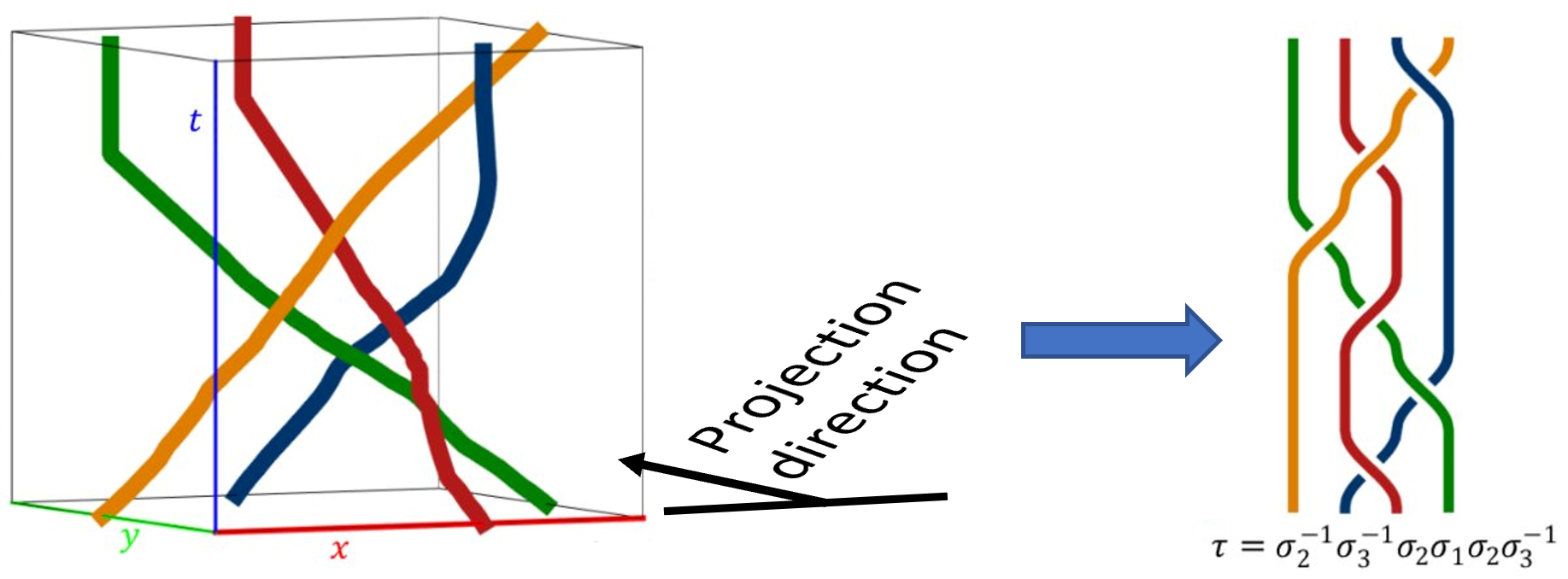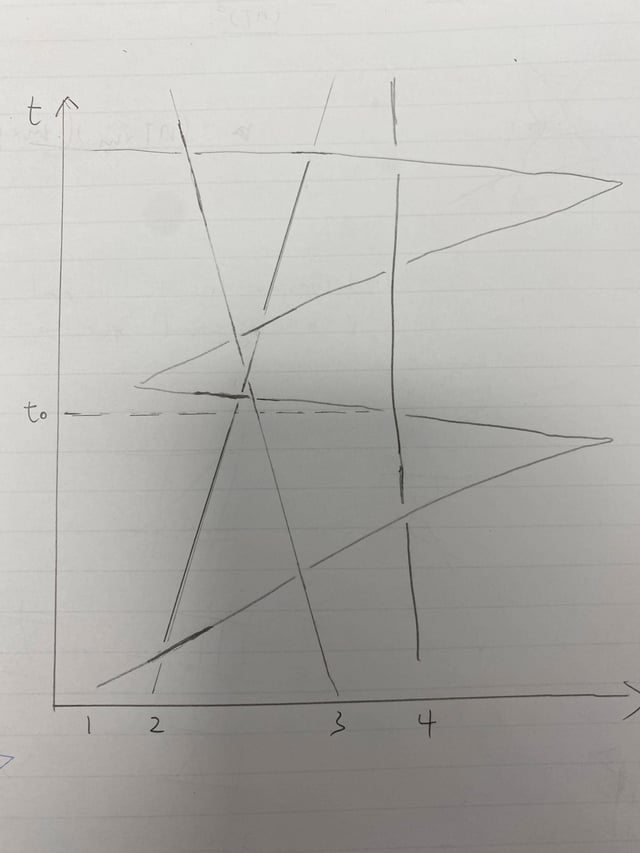Considering we have the space-time trajectory of multiple particles (or any objects) in the X-Y-Time coordination system. Given a projection direction, we can obtain the braid form of the space-time trajectory. The figure below illustrates this idea (taken from the paper 'Social Momentum: A Framework for Legible Navigation in Dynamic Multi-Agent Environments' by C Mavrogiannis, etal).
Now, image the trajectory are strings and we can pull them tight while keeping their starting and ending positions unchanged (it is like applying elementary moves on the trajectories), we may or may not be able to straighten all the strings. By straightening the strings I mean making the string a straight line between the starting and ending points. Not able to straighten the strings means that some strings is in contact with at least one other strings. The radius (thickness) of string is neglected.
My first question is, for a space-time trajectory that cannot be straightened, does there always exist a a projection direction parallel to the X-Y plane, such that the corresponding braid form also cannot be straightened? The braid form is a standard form where the starting and ending point are evenly spaced. Braid cannot be straightened meaning that its strings cannot be all straight no matter how many elementary moves and reidemeister moves applied to it.
My second question is, given a braid that cannot be straightened, does there exist a point in time $t_{start}<t_1\leq t_{end}$, such that the braid formed during time $t_{start}$ to $t_{1}$ consists of some sub 2-braid or 3-braid that can be closed to form non-trivial knot/link? Sub 2-braid and 3-braid are braids formed when we only pick the particular 2 or 3 strings from the braid.
The intuition for the second question is, when a bent string in a braid is formed, it gets the bend from first interacting with either one or two other strings. Hence, if we extract the part of the braid from the start to the time when the first bend is formed, the 2 or 3 strings that interacted together should form a non-trivial knot/link.
The questions are long and maybe a bit difficult to understand at first. Really appreciate any input on any questions. Feel free to clarify anything as well. Thank you for reading!
EDIT: to give examples for the second question, the left braid in the figure below is straightenable, while the right braid is not. The right braid closes to be a non-trivial knot.
I have also taken a look at the Brunnian 4-braid, which is not straightenable, and it has a sub 2-braid formed from string 1 and 4 which gives a non-trivial knot at time $t_0$.



